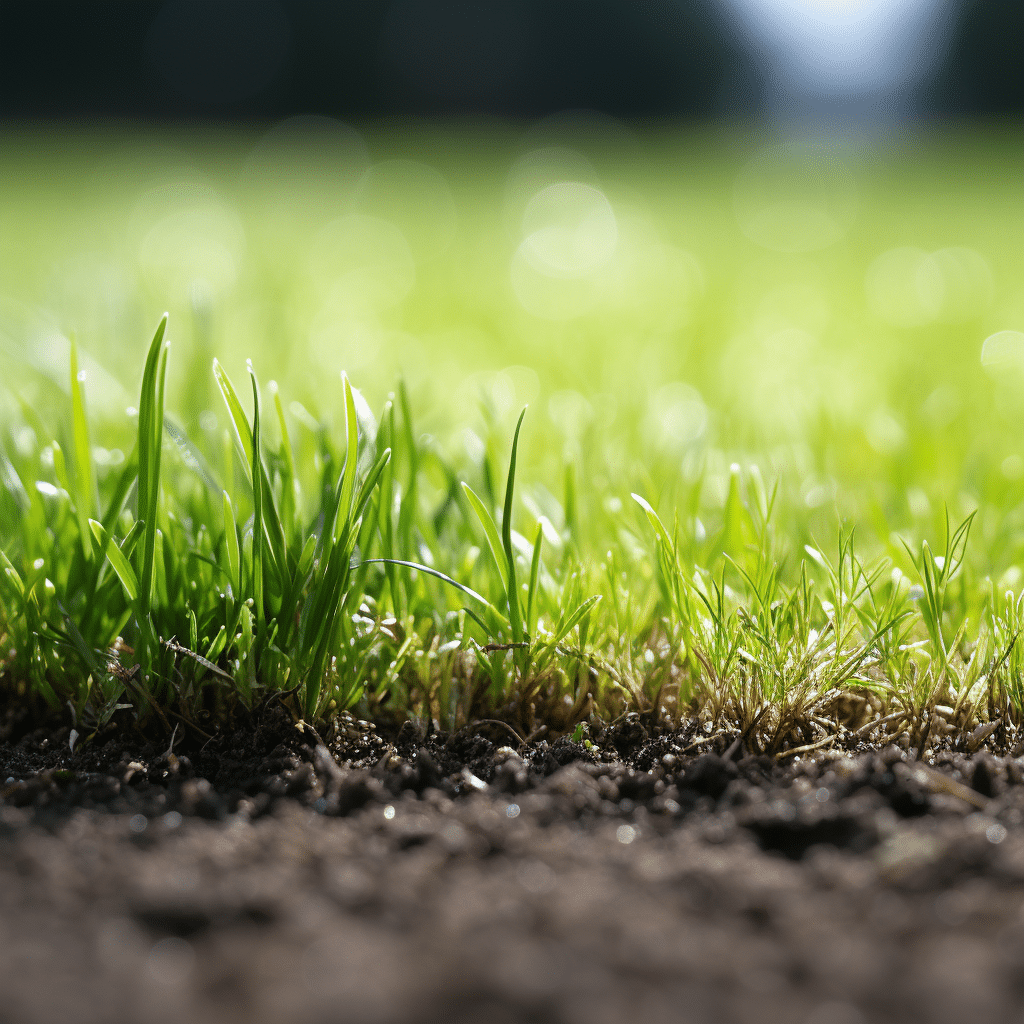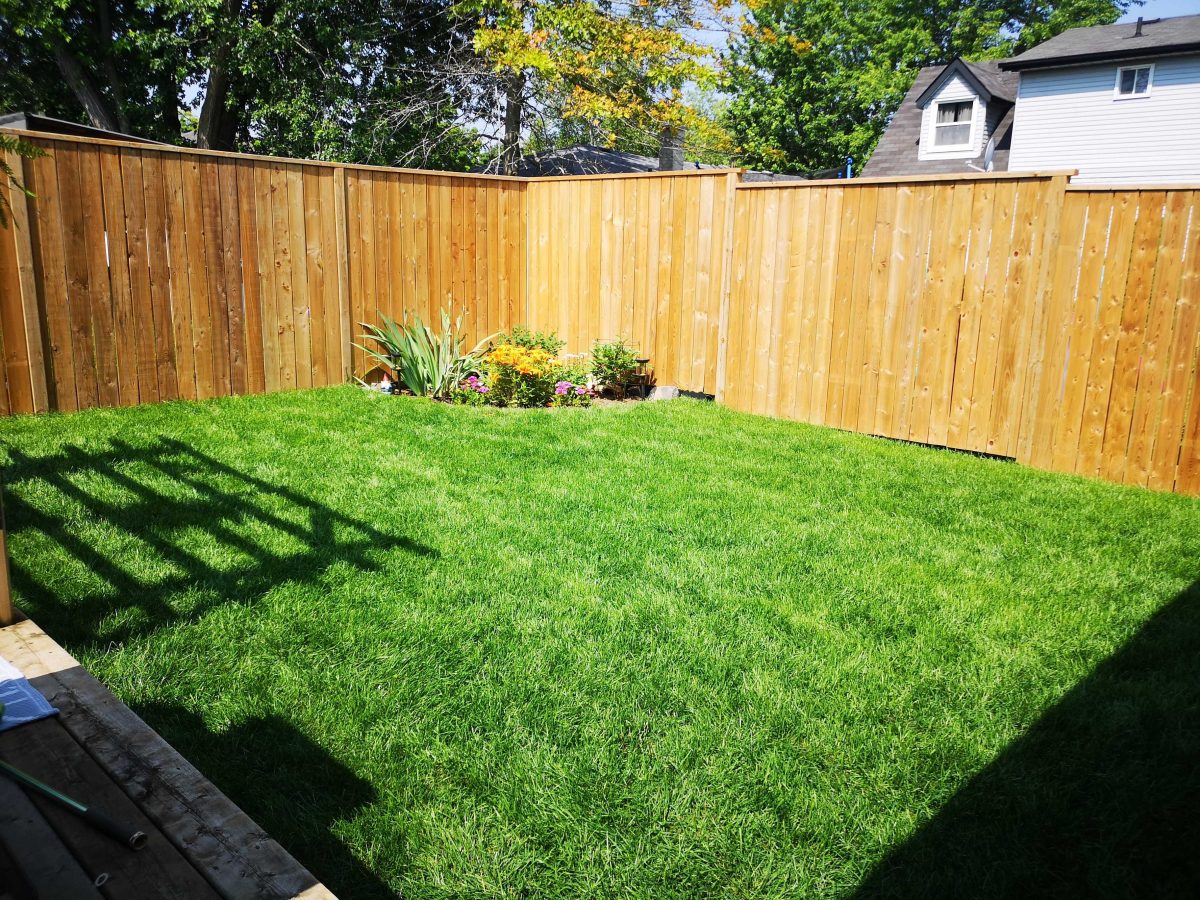
Understanding the Basics: Sod vs Seed
Deciding between sod and seed for your lawn can be a bit of a conundrum. Each option has its own set of advantages and disadvantages, so it’s essential to understand what each one brings to the table before making your decision.
Starting with sod, it’s basically grass that has already been grown. It comes in rolls or squares that you lay out on your prepared soil. The primary advantage here is immediate gratification – you get a fully green lawn right away! Plus, sod tends to be more resilient against weeds since it’s mature grass.
But let me highlight some drawbacks too. Sod can be quite pricey compared to seeding; this could affect your budget if you’ve got a large area to cover. Also, while laying sod might seem simple enough, ensuring proper root establishment does require careful attention and watering.
Now onto seeds! If patience is one of your virtues and cost-effectiveness is high on your priority list, then seeding may just fit the bill for you. You’ll have more variety options when choosing grass species as well!
However, there are cons with seeds as well: they require optimal weather conditions (usually spring or fall) for successful germination and growth which means timing is crucial here; also prepare yourself for potential weed invasions during early stages.
| Aspect | Sod | Seed |
|---|---|---|
| Cost | High | Low |
| Variety Options | Limited | Wide Range |
| Time For Establishment | Immediate | Longer Period |
Let’s bullet down some pros & cons:
- SOD
- Pros:
- Instant Lawn
- Resilient Against Weeds
- Cons:
- More Expensive
- Requires Careful Installation
- Pros:
- SEED
- Pros:
- Economical Option
- Greater Grass Variety Choices
- Cons:
• Needs Optimal Weather Conditions
• Susceptible To Early Weed Invasion
- Pros:
Remember: understanding these basics about ‘sod vs seed’ will allow you make an informed choice tailored specifically towards what works best in sync with both – YOUR requirements AND environmental conditions at hand.
Evaluating Cost Factors: Sod and Seed Comparison
When it comes to choosing between sod and seed for your lawn, one of the key factors that can sway your decision is cost. It’s important to understand the financial implications involved in both options.
Let’s start with sod. While installing a sod lawn can give you an instant lush, green yard, it does come at a higher initial cost. You’re essentially paying for someone else’s time and labor of growing the grass. The average price per square foot of sod ranges from $0.30 to $0.80 depending on the type of grass and location.
On the other hand, seeding a lawn might seem like an attractive option due to its low upfront costs; however, there are additional considerations that could inflate expenses over time:
- You’ll need more than just seeds — fertilizers and soil conditioners may be necessary.
- Time investment can’t be ignored as well — regular watering until germination occurs requires effort or automated sprinkler systems which add up in costs.
- Seasonal limitations could mean reseeding if first attempt fails due to unfavorable weather conditions.
Here’s how these costs break down on average:
| Lawn Type | Initial Cost (per sq ft) | Additional Costs |
|---|---|---|
| Sod | $0.75 – $2 | Variable |
| Seed | Less than $.01 | Minimal |
The pros and cons aren’t purely financial though:
- Sod Pros: Immediate results; prevents soil erosion right away; less irrigation needed initially
- Sod Cons: Higher upfront cost; needs professional installation for best results
- Seed Pros: Lower initial expense; offers more variety selection
- Seed Cons: Takes longer time to establish fully functioning lawn
Remember – whether you opt for seeding or laying down sod depends largely on your budget constraints as well as patience level!

Sod Installation
Time and Effort: The Installation Process of Sod and Seed
Let’s dive into the installation process for both sod and seed, focusing on the time and effort required. Understanding these aspects will help us weigh the pros and cons of sod vs seed.
Starting with sod, it’s a quick fix to an empty or worn-out lawn. It arrives ready-made from the farm in thick, lush rolls that you simply lay out over your prepared soil. I can’t emphasize enough how satisfying it is to see instant results! However, there’s more elbow grease involved than meets the eye. You’ll need to ensure precise leveling of your yard before laying down each roll meticulously to avoid gaps or overlaps – this isn’t a job for those short on patience or precision!
Onward now, let’s consider seeding. This method requires sowing grass seeds directly onto your soil which then germinate into new grass over time (usually several weeks). It may seem like less immediate work compared to sodding but don’t be fooled – there are multiple steps involved here too:
- Preparing your ground thoroughly by removing debris
- Evenly distributing seeds
- Regular watering without drowning them
- Maintaining an ideal temperature range for germination
While seeding might appear daunting initially due its multi-step process, keep in mind that it allows greater flexibility when choosing specific types of grass suited perfectly to your local climate conditions.
The table below gives a brief snapshot comparing time frames for both methods:
| Installation Method | Time To Install | Time To Establish |
|---|---|---|
| Sod | Few hours-Days | 2-6 weeks |
| Seed | Few hours-Days | 6-8 weeks minimum |
To wrap up this section, we’ve looked at two popular methods of establishing lawns – sodding versus seeding. Both have their unique demands regarding installation timescales and efforts invested but remember: beauty lies not just in instant gratification but also long-term satisfaction!
Pros and Cons: Weighing Your Options Between Sod and Seed
When it comes to sprucing up your lawn, there’s always a debate on whether to go for sod or seed. Both have their advantages and drawbacks, depending on what you’re looking for.
Starting with sod, it’s the quick-fix solution that gives you an instant lush green lawn. It offers immediate erosion control and is less labor-intensive compared to seeding. You don’t have to worry about birds swooping down and feasting on your seeds before they even get a chance to germinate!
However, this convenience comes at a cost—literally! Sod can be significantly more expensive than seed. Furthermore, its selection can be limited by region or seasonality as not all grass types are available in sod form.
| SOD | |
|---|---|
| Pros | Instant Lawn |
| Erosion Control | |
| Less Labor Intensive | |
| Cons | Higher Cost |
| Limited Selection |
On the flip side, let’s consider seeding. If we’re talking variety, then seed wins hands down! You’ve got a wider array of grass species suitable for different climates and soil conditions; something that isn’t possible with sod.
The other major advantage of going the seeding route is cost-effectiveness—it’s far cheaper than sodding! But bear in mind that lower upfront costs don’t mean less work—you’ll need patience waiting for seeds to germinate which could take weeks!
Also worth noting is the risk of weeds cropping up among your newly planted grass if not properly cared for—a potential hassle I’m sure no one wants.
Here’s how it stacks up:
SEED
| SEED | |
|---|---|
| Pros | Variety |
| Cost-Effective | |
| Cons | Longer Germination Period |
| Risk Of Weeds |
To sum things up briefly without getting too technical: if you want an instant lush green lawn right away—choose sod. If variety & cost-effectiveness are higher priorities—and you’re okay with putting in some extra effort—then seed might just be your best bet.
Wrapping It Up: Making an Informed Decision on Sod vs Seed
When it comes to the battle of sod versus seed, there’s no clear-cut winner. It’s all about weighing the pros and cons of each option and deciding which one suits your specific needs best.
Let’s recap what we’ve learned so far:
- Sod is essentially a grassy carpet, ready to be rolled out onto your lawn. If you’re after instant gratification or need to prevent soil erosion quickly, sod might be your best bet. However, it can be more expensive than seeding and requires careful watering until roots establish themselves.
- On the other hand, seed offers a wider variety of grass types and is less costly up front. But remember that patience is key with this method—you won’t see results overnight. Seeding also calls for ongoing care such as watering and protecting from birds.
Both options have their advantages; both have drawbacks too.
| Sod | Seed | |
|---|---|---|
| Pros | Instant Lawn | Variety & Cost Effective |
| Cons | Expensive & Requires Careful Watering | Takes Time & Needs Ongoing Care |
The decision between sod versus seed isn’t just about cost or time—it’s also about personal preferences like how much effort you’re willing to put into maintaining your lawn or what kind of look you want for it in the end.
As I wrap this up, I hope I’ve provided enough insight into the pros and cons of sod vs seed to help make an informed decision on which route works best for you! The choice ultimately lies in understanding these factors well enough so that when faced with making a call—sod or seed—you’ll know exactly why you’re choosing one over another.
Colin Macmillan is a seasoned entrepreneur and the CEO of Riverwood Landscape, a leading landscaping company based in Canada. He has been at the helm of the company since leaving high school, demonstrating his strong leadership skills and business acumen.
Colin’s expertise lies in various aspects of landscaping, including lawn care, interlocking, sod installation, and commercial maintenance. His hands-on approach and dedication to the craft have been instrumental in building Riverwood Landscape into a reputable brand.
One of his most notable achievements is the creation of a successful landscape franchise that services multiple locations. This accomplishment underscores his strategic thinking and ability to scale operations effectively.
Colin has also had the privilege of working with Guelph Hospital for landscaping and maintenance, a testament to the trust and reliability that his company has earned over the years.
His professional mission is to offer the best services and experiences for customers, a goal that he tirelessly pursues. Colin’s commitment to excellence and customer satisfaction continues to drive the growth and success of Riverwood Landscape.








